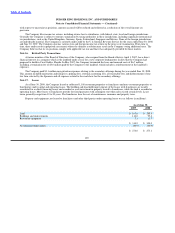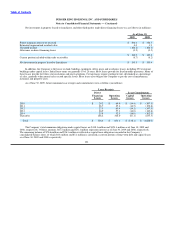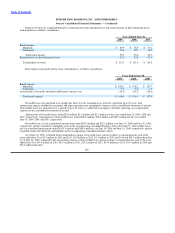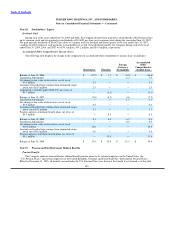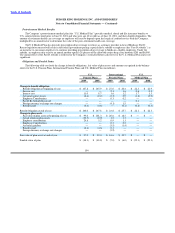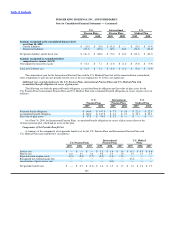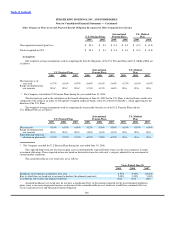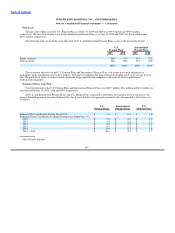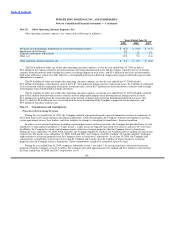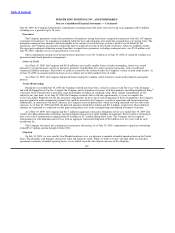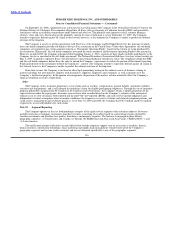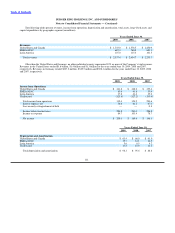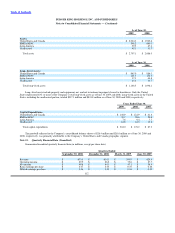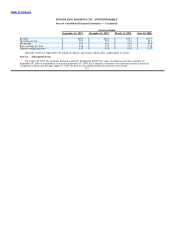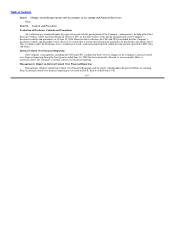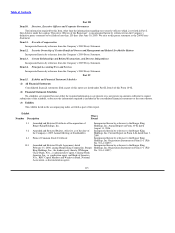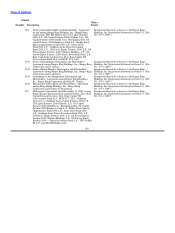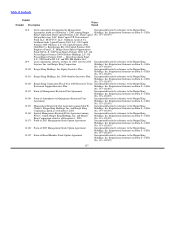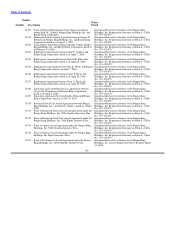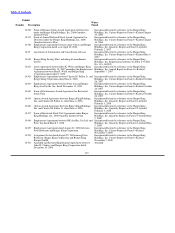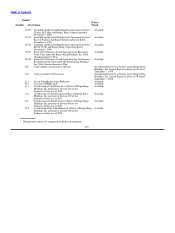Burger King 2009 Annual Report Download - page 113
Download and view the complete annual report
Please find page 113 of the 2009 Burger King annual report below. You can navigate through the pages in the report by either clicking on the pages listed below, or by using the keyword search tool below to find specific information within the annual report.
Table of Contents
BURGER KING HOLDINGS, INC. AND SUBSIDIARIES
Notes to Consolidated Financial Statements — (Continued)
On September 10, 2008, a purported class action lawsuit was filed against the Company in the United States District Court for the
Northern District of California. The complaint alleged that all Burger King restaurants in California leased by BKC and operated by
franchisees violate accessibility requirements under federal and state law. The plaintiffs seek injunctive relief, statutory damages,
attorney’s fees and costs. The hearing on the plaintiffs’ motion for class certification is set for September 17, 2009. The Company
intends to vigorously defend against all claims in this lawsuit; however, at this moment the Company is unable to predict the ultimate
outcome of the litigation.
The Company is a party to written agreements with The Coca−Cola Company and Dr Pepper/Seven Up, Inc. pursuant to which
these soft drink companies provide soft drinks to Burger King restaurants in the United States. Under these agreements, the soft drink
companies are required to pay certain amounts, known as “Restaurant Operating Funds”, based on the volume of syrup purchased by
the restaurants. Historically, the soft drink companies have paid the entire amount of the Restaurant Operating Funds to the restaurants.
However, in April 2009, the Company announced that beginning January 1, 2010, a portion of these funds would be paid directly to the
Company for use as specified in the soft drink agreements. The National Franchisee Association filed these two class action lawsuits on
May 4, 2009, claiming to represent Burger King franchisees and seeking third party beneficiary status. The complaints allege that BKC
and the soft drink companies did not have the right to amend the Company’s agreements to reduce the portion of Restaurant Operating
Funds paid directly to the restaurants without the franchisees’ consent. The Company intends to vigorously defend against all claims in
this lawsuit; however, the Company is unable to predict the ultimate outcome of the litigation.
From time to time, the Company is involved in other legal proceedings arising in the ordinary course of business relating to
matters including, but not limited to, disputes with franchisees, suppliers, employees and customers, as well as disputes over the
Company’s intellectual property. In the opinion of management, disposition of the matters will not materially affect the Company’s
financial condition or results of operations.
Other
The Company carries insurance programs to cover claims such as workers’ compensation, general liability, automotive liability,
executive risk and property, and is self−insured for healthcare claims for eligible participating employees. Through the use of insurance
program deductibles (ranging from $0.5 million to $1.0 million) and self insurance, the Company retains a significant portion of the
expected losses under these programs. Insurance reserves have been recorded based on the Company’s estimate of the anticipated
ultimate costs to settle all claims, both reported and incurred−but−not−reported (IBNR), and such reserves include judgments and
independent actuarial assumptions about economic conditions, the frequency or severity of claims and claim development patterns, and
claim reserve, management and settlement practices. As of June 30, 2009 and 2008, the Company had $36.5 million and $34.4 million,
respectively, in accrued liabilities for such claims.
Note 22. Segment Reporting
The Company operates in the fast food hamburger category of the quick service segment of the restaurant industry. Revenues
include retail sales at Company restaurants, franchise revenues, consisting of royalties based on a percentage of sales reported by
franchise restaurants and franchise fees paid by franchisees, and property revenues. The business is managed in three distinct
geographic segments: (1) United States and Canada; (2) Europe, the Middle East and Africa and Asia Pacific (“EMEA/APAC”); and
(3) Latin America.
The unallocated amounts reflected in certain tables below include corporate support costs in areas such as facilities, finance,
human resources, information technology, legal, marketing and supply chain management, which benefit all of the Company’s
geographic segments and system−wide restaurants and are not allocated specifically to any of the geographic segments.
110


